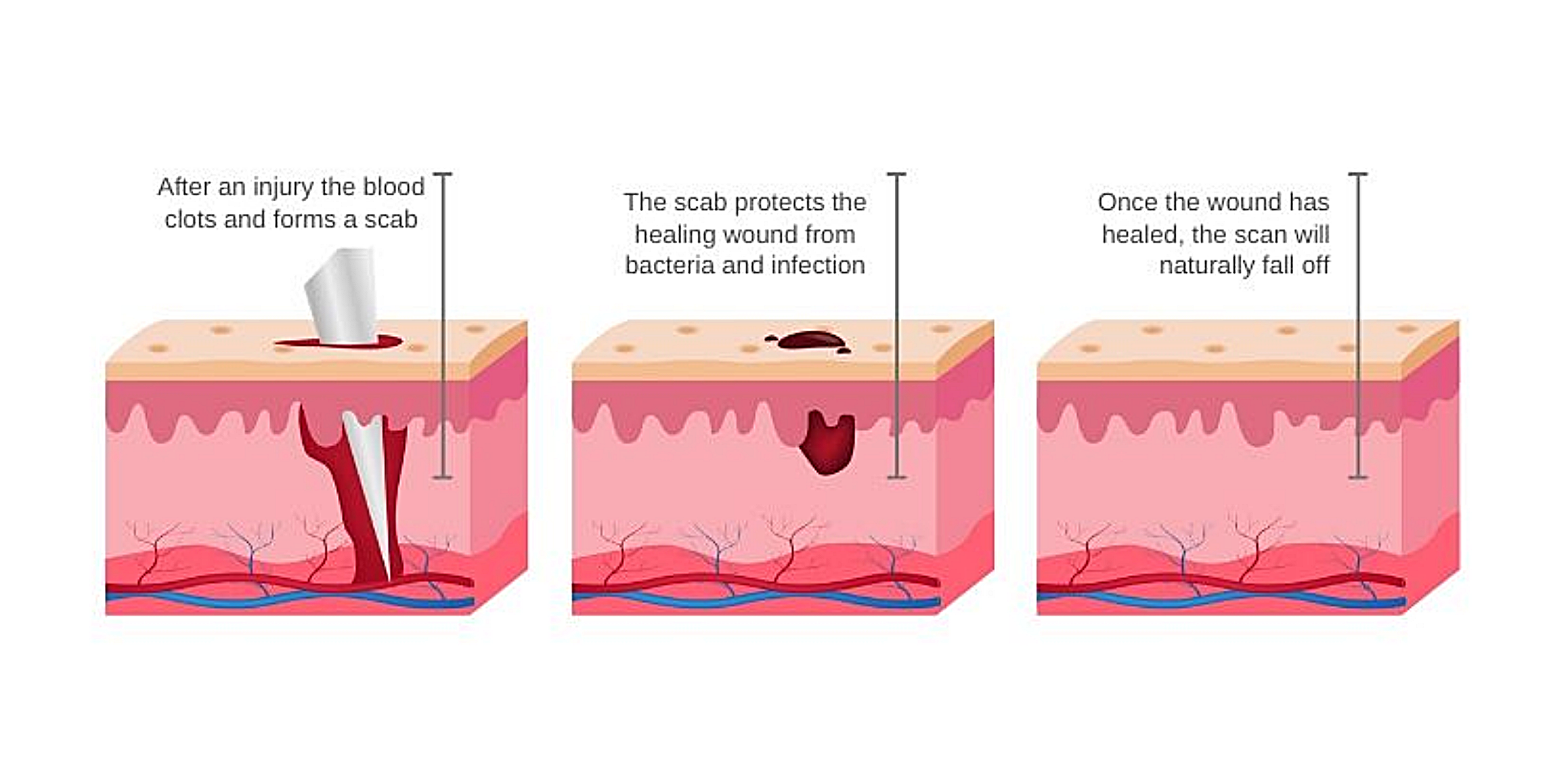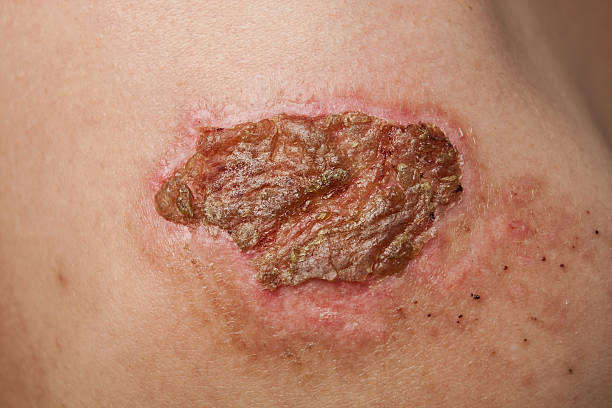
Scabs form as a protective covering on skin damaged from cuts, bruises, acne, bug bites, rashes, or from other causes of skin injury.
Following an injury, blood clots form on the surface; this later hardens and forms a protective film. This protective film formed over the injury enables skin tissue repair and after complete tissue regeneration, the scab falls off with new skin taking its place.
The severity of the injury or damage to the skin determines how fast a scab forms. Small injuries form scabs faster than large injuries. In large injuries, scabs usually start forming at the edges moving slowly towards the inner parts.
WHY ARE SCABS IMPORTANT?
Scabs serve as defense against infections, blood loss and contamination of injured skin surfaces.
A scab positively indicates that an injury is healing well. Most times, an injury can take days or weeks to completely heal depending on its severity.
PROCESS OF SCAB FORMATION
Immediately there is an injury on any part of the skin, the body activates platelets around the injured surface. The platelets act like fibrous mesh and form a clot.

Image credit:safeandsoundhealth
The clots are a temporary protective covering on the injured surface, preventing blood loss.
After proper cleaning of the injured surface, the clot formed becomes harder and dries up, forming a Scab.
The scab formed on the surface gives the body the opportunity to repair the damaged area by replacing damaged skin tissues, blood vessels and fight off any form of contamination that might have occurred after the injury.
TAKING CARE OF SCABS
- After an injury to the skin, make sure you clean its surface with an antiseptic in water solution to remove any form of germs and prevent infection.
- Depending on the location and severity of the injury, plasters may be required to protect the injured surface. Small surface injuries may not require plaster. Big, wide, and deep injuries will require medical attention and the use of bandages, plasters and other dressings to cover them up.

- The process of injury healing can cause an itchy sensation. It is necessary to avoid vigorous itching as the healing process can be disrupted.
- When the surface of a scab is dried, itching is more intense. You can apply vaseline or an antibacterial ointment like penicillin ointment to make it moist and enhance the healing process.
It is however important to know that when you pick at a scab, you interrupt and interfere with the process of repair and healing. The injury starts the process of healing again after the scab is picked out, and the injury takes a longer time to heal.
Continuous picking at a scab can make it form a SCAR, which will leave an unsightly mark on your skin.
Image credit: istock photos

Ezike Nonye is a Pharmacist who completed her Bachelor degree from University of Lagos (B.Pharm). She is currently exploring digital marketing analytics as a novel field in Pharmacy practice while also interning at the Federal Medical Center (FMC) Abeokuta, Ogun State, Nigeria. She is a graphic designer, a blogger and an entrepreneur. She is passionate about creating new things from nature and believes that there is no limitation to what you can achieve. She is a Christian and loves writing and open to new ideas and skills.

